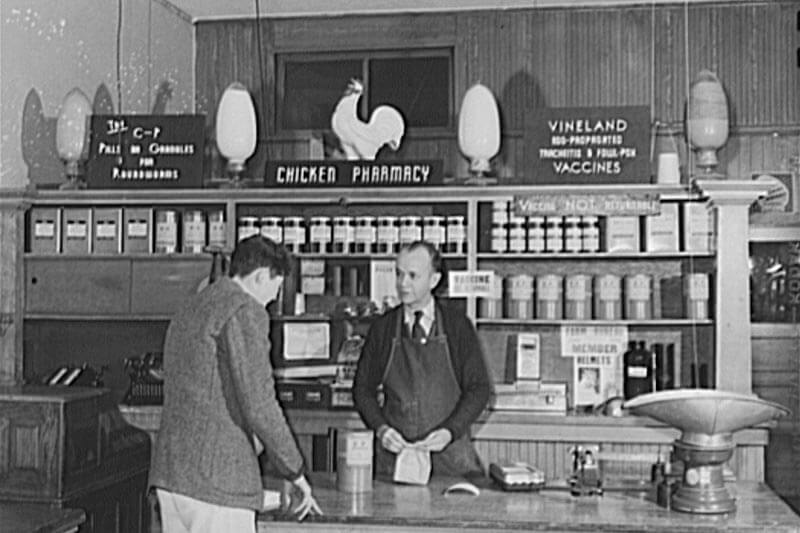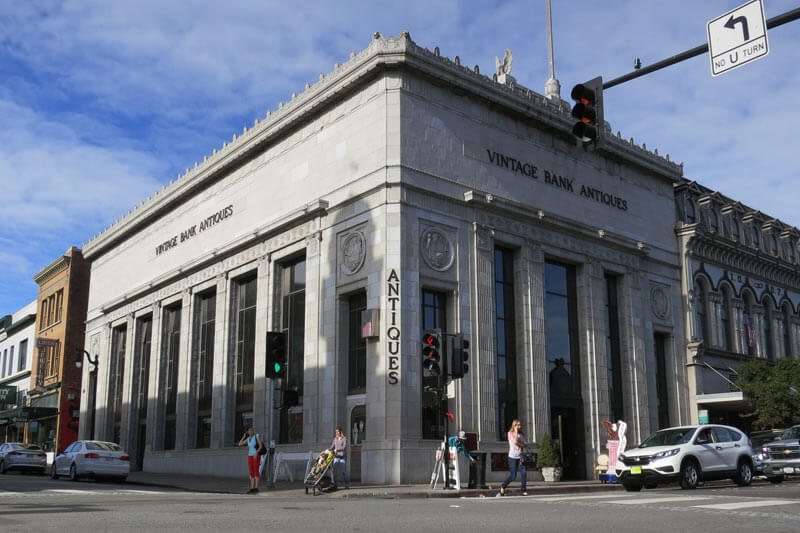PETALUMA’S RICH HISTORY
The history and events that shaped the West and California are reflected in Petaluma’s landmarks and historic attractions. Rich in authenticity, Petaluma’s heritage can be traced through Native American tribes, Mexican settlements, the discovery of gold, railroad expansion, and the San Francisco earthquake.
Chartered in 1858, Petaluma is one of California’s oldest cities. The city’s riverfront location made it a bustling destination during the mid-19th century Gold Rush when the river carried produce, poultry and dairy products from this fertile valley to the rapidly exploding populations of San Francisco and Oakland.
Spared much of the destruction of the 1906 earthquake, Petaluma boasts buildings whose foundations were laid a century and-a-half ago and whose facades are some of the best examples of iron front building architecture in the entire United States.
Today, these architectural gems in our walkable downtown district house specialty stores, restaurants and galleries.
DISCOVER HISTORIC PETALUMA

HISTORIC DOWNTOWN
Because of its riverfront location and fertile land, the Petaluma experienced boom times in the decades following its founding in 1858 and by 1880, it was the largest shipping point for dairy products in the entire state. The city’s prosperity at the turn of the century is reflected in well-preserved commercial, industrial and residential buildings. Boasting some of the best examples of iron-front architecture in the country, Petaluma’s downtown is listed on the National Register of Historic Places.
Petaluma’s renowned charm and distinctive architecture are primarily attributable to one architect – Brainerd Jones. Described as the man who built Petaluma, Jones career began around 1900 and spanned five decades. He designed Victorian homes to Arts & Crafts bungalows, the stately Carnegie Library (now the Petaluma Historical Library & Museum) to the downtown Post Office, never taking a cookie-cutter approach.
Explore examples of Jones’ architecture and other historic sites on the Historic Sites map.
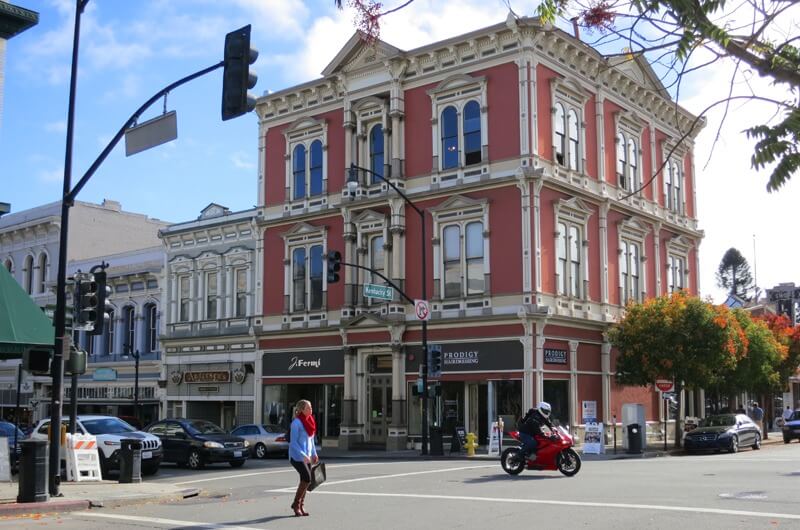

HISTORIC DOWNTOWN’S RIVERFRONT
Many of the world’s greatest cities are located on a river. And that’s true for Petaluma too. The Petaluma River turned a small settlement into a thriving city in the mid 1800s and has been an important center of commerce and recreation ever since.
During the peak of the riverboat era, there was more tonnage and dollar value hauled on the Petaluma River than on any other river in the state. The schooners, sloops and paddle wheelers transporting people and goods made Petaluma the third busiest inland port in the state.
Today, you’re much more likely to see sleek and maneuverable kayaks and paddleboards on the River. It is a recreational asset attracting water craft enthusiasts, bird watchers, and boaters. Though the uses of the Petaluma River and the types of vessels on it have changed dramatically in the 150 years since Petaluma was founded, the river continues to contribute to the community’s vitality and economy.
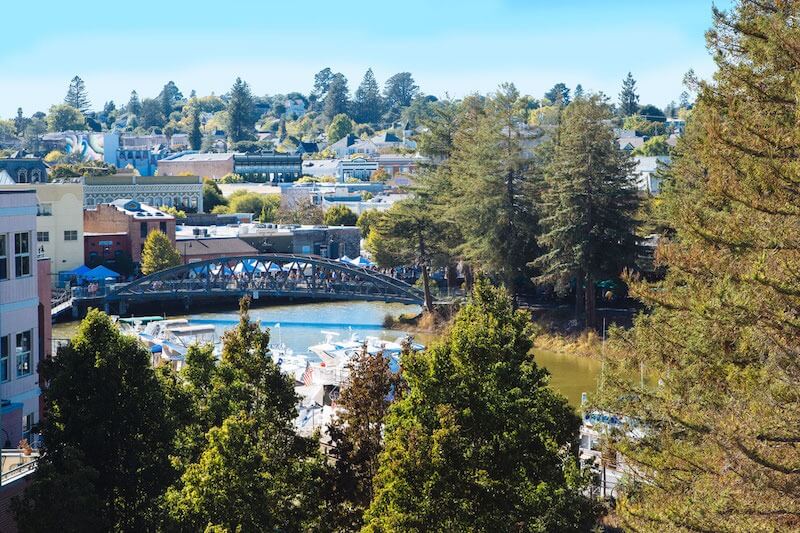

ARTS & ENTERTAINMENT AT THE HEART OF THE COMMUNITY
While Petaluma was growing as a commercial and agricultural center, the city’s reputation as a performing arts mecca was keeping right in step. Numerous opera houses and theaters provided Petaluma’s burgeoning population “fireproof films” in addition to staging “the largest and best in the world” popular dramas and plays.
Several of the entertainment venues from the early 1900’s are still attracting audiences from throughout the Bay Area. Cinnabar Theater, housed in a 1908 two-room schoolhouse, has been a shining star in Petaluma for more than 50 years. This intimate theater regularly presents live drama, cabaret and musical performances. It is entertainment worthy of a big city without the big city ticket prices.
Described as the North Bay’s premier music venue, the Mystic Theatre was built in 1911 to host vaudeville performances. The Mystic has an illustrious history and has hosted diverse artists from R&B singer/songwriter Sean Hayes to tribute bands like Ronstadt Revival, Fleetwood Mask and Gimme Gimme Disco: A Dance Party Inspired by ABBA.
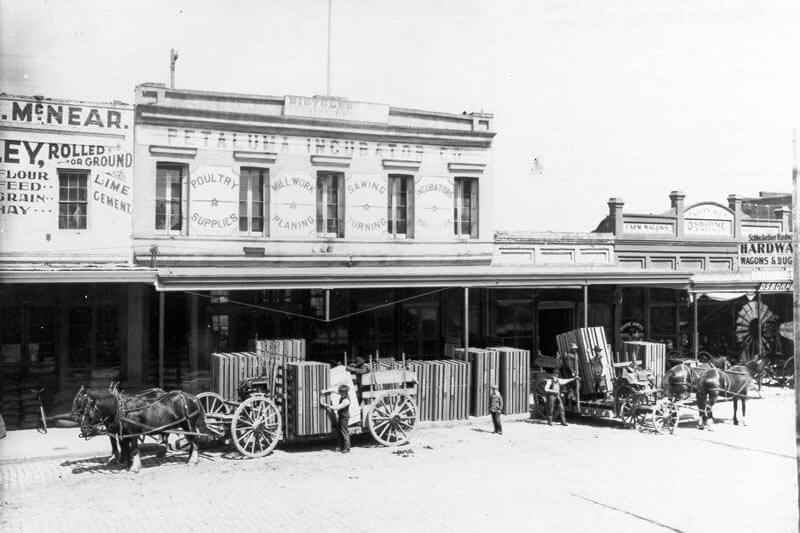

PROUDLY PRESERVED HISTORIC HOMES
Petaluma’s prosperous past laid the foundation for residents to build homes that have stood the test of time. Several streets that border the downtown district are studded with homes that span architectural styles from 1860 through 1925. Spanish Revival, Queen Anne, Colonial Revival, and Victorian Stick, are some of the styles represented on the tree-lined streets.
Visitors enjoy studying the facades of the homes and discovering the abundant details unique to their architectural style. For example, the 1885 Queen Anne style home at 5th and D Street, is asymmetrical in design, includes a polygonal tower and angled bay windows, favorite features among architects designing Queen Anne homes.
If we’ve whetted your appetite to learn more about Petaluma’s historic architecture, learn more about some of the homes on Petaluma’s Historic Resource Inventory.
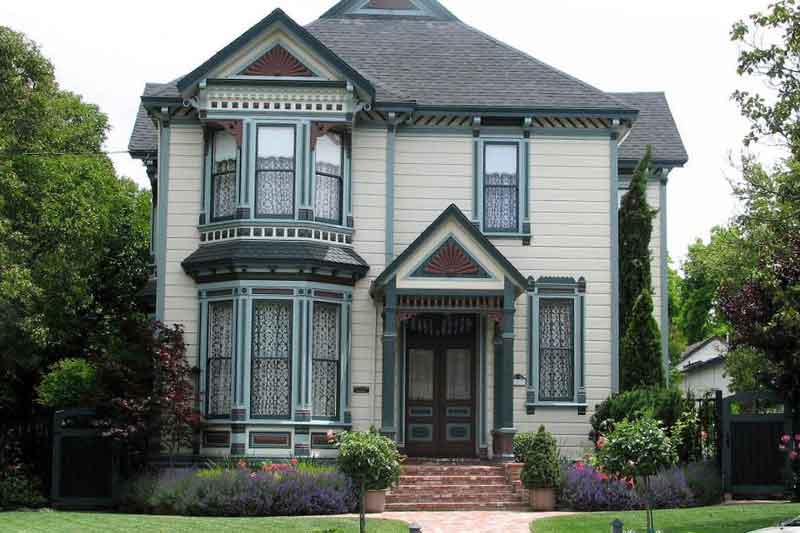

INDUSTRY ROOTED IN AGRICULTURE
During the Gold Rush era, Petaluma was transformed from a humble hunting camp into a commercial and transportation hub. The town’s riverfront location made it possible for poultry, grain, and dairy products from the fertile agricultural region to be shipped down the river to the rapidly growing populations of San Francisco and Oakland bringing growth and prosperity to Petaluma.
Much of Petaluma’s identity is tied to the dairy and poultry industries – a heritage that the community celebrates to this day. It began in 1879, when Lyman Byce and Isaac Dias invented the first practical incubator, making it possible for eggs to hatch away from the chicken so hens could stay in constant production. It was estimated that by 1908, at least 75 percent of the county’s population raised poultry.
Following World War I, the Petaluma egg industry was going through tough times so in 1918, the Chamber of Commerce reached out to Bert Kerrigan, a public relations genius who came up with the tag line “The World’s Egg Basket.” Petaluma’s Butter & Egg Days Parade harkens back to Kerrigan’s National Egg Day parade that featured a giant egg basket touting “4 million Petaluma Hens lay 450 million eggs annually,” bringing national attention to Petaluma.
